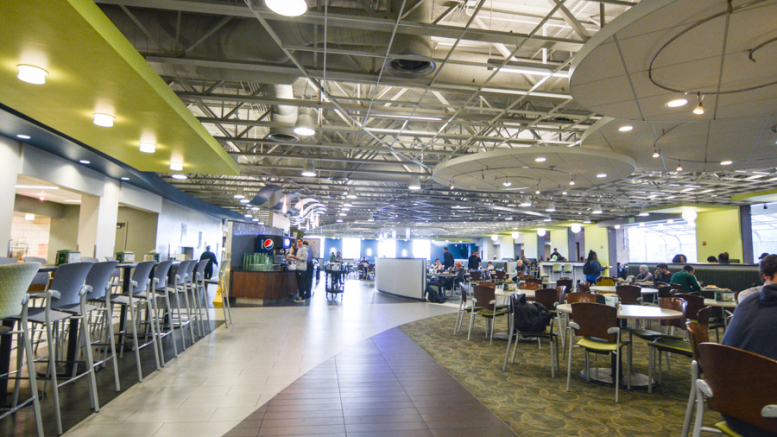Despite criticisms, Sodexo does offer a variety of food options on campus. However, these options, along with following trends, contribute to swelling costs.
Rita Webster, general manager McDaniel Dining Services, says, “I really change the menu based on what students want.” Some of these changes include fresh fruit on Wednesdays and at other points during the week, the incorporation of pizza and crab dip at the pub, and various accommodations for students with allergies or special diets.
Further adding to the cost is the Real Food Challenge, which, among other things, involves purchasing twenty percent of dining service’s food locally by the year 2020. On this, Webster states, “I wish I could get all local food, but it does cost more.”
On cost, Webster asserts, “[it] will always increase each year. We can’t really control that…” This, however, is something that happens on a national level. According to the United States Department of Agriculture Economic Research Service, for the past 20 years the average yearly increase in food prices is 2.6 percent.
While the price-per-meal hasn’t increased drastically between this year and last, the number of meals many students are required to purchase has. For example, last year, freshmen were required to buy a minimum of 210 meals per semester, about 14 meals per week, while, this year, they are required to buy 19 meals per week plus 45 meal exchanges.
Yet, meal plan costs are roughly comparable to similar colleges. At McDaniel, the “GOLD” plan, 19 meals per week, will cost a student $2,750 per semester. Likewise, at nearby Hood College, a 19 meal/week plan costs $2,820, and at Washington College, a traditional 19 meal per week plan costs $2,611. It’s worth noting, however, that meal plans function differently at every institution and include different components.
One way dining services attempts to limit expenses is by attempting to reduce waste. This is first done with portioning. Essentially, people get one serving of something, then can return if they’d like. Additionally, batch cooking helps limit waste. On this, however, Webster says, “we’re not trying to be mean, but we’re really just trying to make sure [students] eat what we give them.”
Dr. Ethan Seidel, a professor who served on administration for many years, claims that “we always keep track of what other colleges are doing, what meal plans they’re using, what they cost, what you get for your money…[etc.]”
Additionally, he states “over the years, meal plans have become, in general, much more flexible.” He cites a time when colleges had only one simple meal plan that everyone was on. “When I came to the college… there was just [one] line that you went through and you didn’t have stations that you could go to. It was just whatever was on the line that day,” he says.
According to Seidel, very few staff and faculty ate at the dining hall in those days. He believes the ‘food court’ design and nicer dining hall have made a huge difference and that the college’s staff and faculty make their own ‘commentary’ by eating there frequently.
Although it’s debatable whether or not Glar offers “…food choices to rival your favorite restaurants,” the food still comes at a premium price. Depending on the restaurant, Glar’s door prices fall in a approximately comparable range. Nonetheless, few of us can afford to eat in restaurants every day. Seidel acknowledges that a place of dining can get old if a person eats there too often. Moreover, meal plans are relatively expensive at many colleges.
Despite widespread student desires for more retail locations on campus, this simply doesn’t prove to be easily attainable. On this, Webster says, “we have tried to get other franchises on campus, but a lot of what they’re looking at is the traffic. If there’s not enough traffic… they’re not going to be here. And that’s actually happened.” The only current retail location on campus independent of Sodexo is Vocelli’s, which rents its current space out from dining services. In fact, it is actually the longest standing outside vendor on campus.
Overall, while very expensive for the quality, McDaniel Dining Services attempts to honor student desires for food. Any food can become unpleasant if consumed too often, and there’s no doubt that student expectations remain high. Nonetheless, it’s unlikely anyone would escape this type of meal plan by going to another college.
Read part two: “Transparency and Suggestions.”
Read part three: “Serving the McDaniel Community.”




